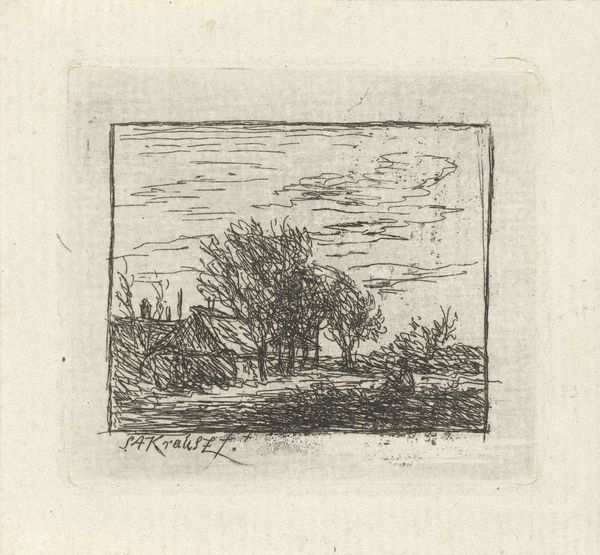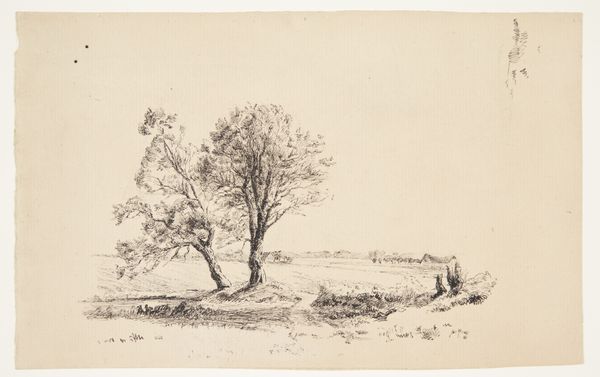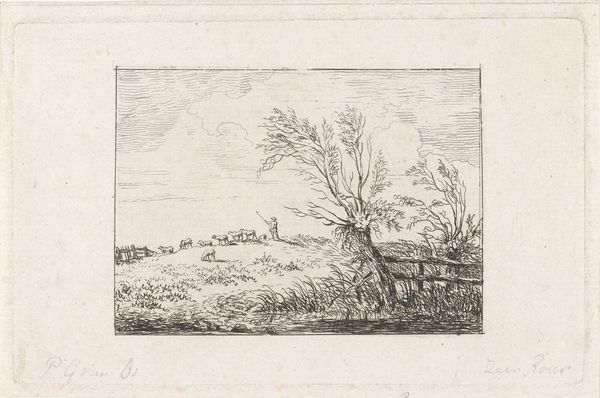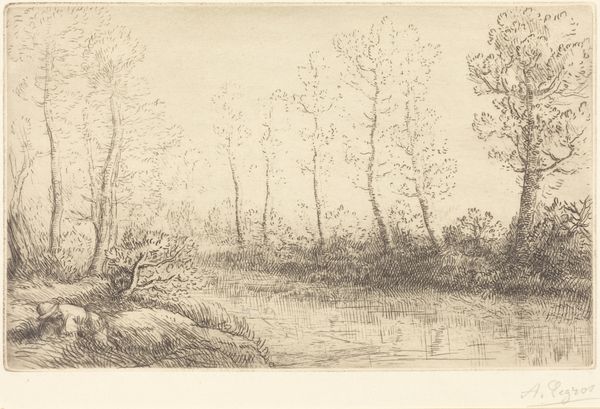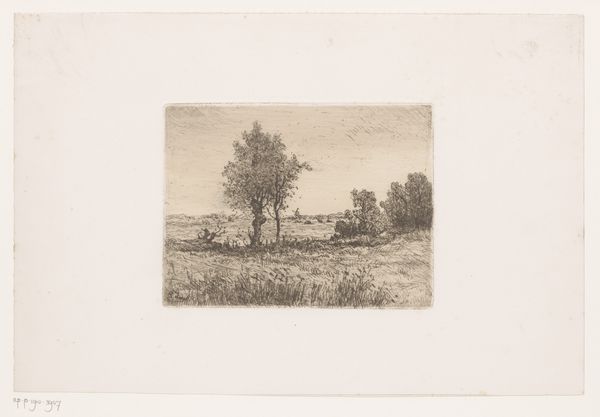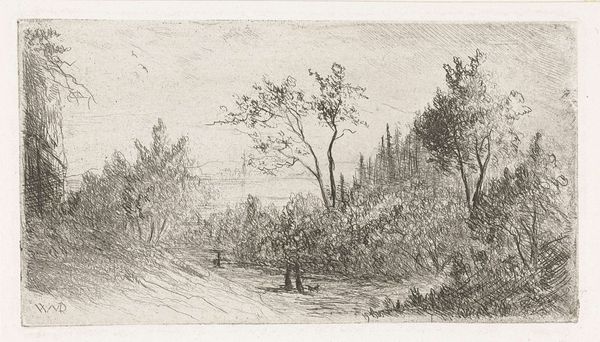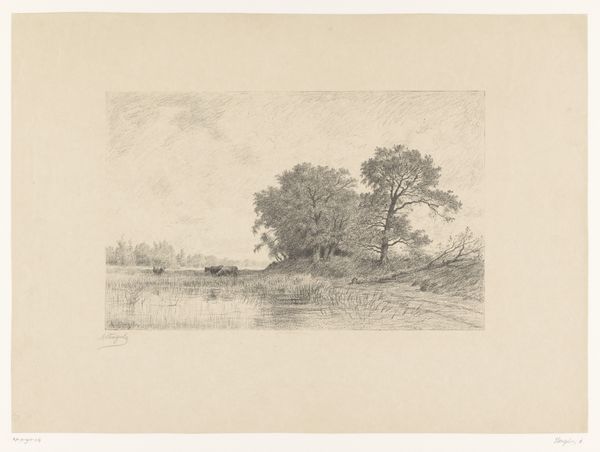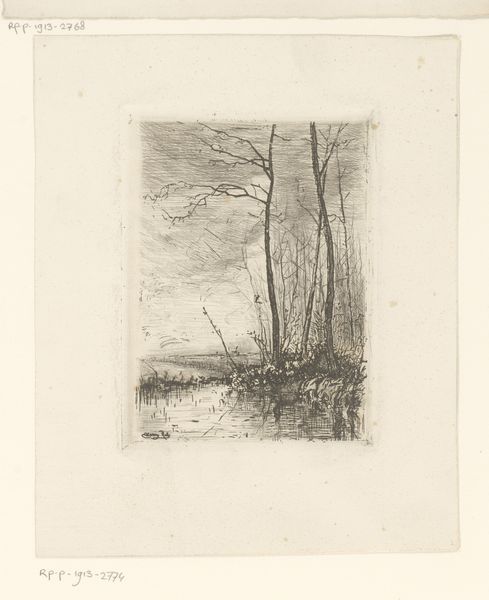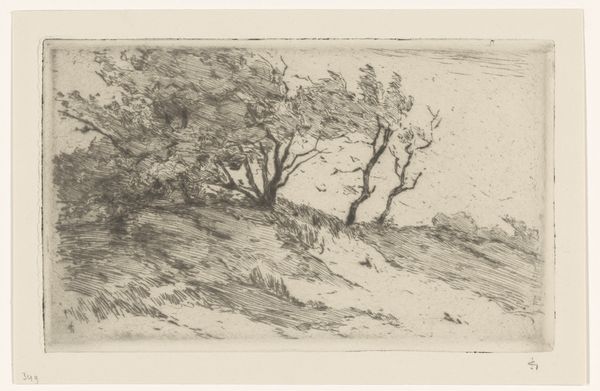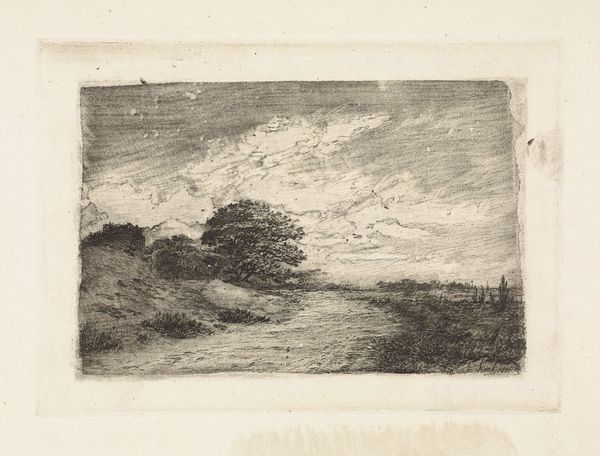
drawing, pencil
#
drawing
#
pencil sketch
#
landscape
#
pencil drawing
#
pencil
#
realism
Dimensions: height 81 mm, width 89 mm
Copyright: Rijks Museum: Open Domain
Editor: This is *Knotwilgen langs een sloot*, depicting pollard willows along a ditch. It’s by Marinus Heijl, made sometime between 1846 and 1931, and rendered in pencil. The overall impression is one of stark simplicity, but also, something a bit melancholic. How do you interpret this work? Curator: What strikes me is the representation of labor embedded within the landscape. The pollard willows are not simply "natural"; they are products of human intervention, a very specific agricultural practice. It begs the question, who performed that labor? And what relationship did they have with the land? Editor: So, the artistic rendering isn't just about capturing nature, but also the social structures within that space? Curator: Precisely. The drawing invites us to consider the people who shaped this landscape, their connection to the means of production, and how their labor might be obscured in more picturesque depictions of the countryside. Consider the gendered division of labor: were women involved in this process, and how would their contributions be recorded—or erased—from historical accounts? Editor: I never would have thought about it like that, seeing it in terms of labor and potential social commentary. Curator: What does the drawing do for those whose labor it represents? Or does it serve the needs of the middle-class urban viewers by providing them with an escape from their working environment? Editor: It gives a very different angle from just the pure visual appeal. Thanks, I learned a lot. Curator: It has been my pleasure, it makes me re-evaluate too when seeing art through fresh eyes.
Comments
No comments
Be the first to comment and join the conversation on the ultimate creative platform.
